#angkorian world
Explore tagged Tumblr posts
Text
Heritage News of the Week
Discoveries!
As construction crews churned up dirt to renovate a football pitch in Vienna last October, they happened upon an unprecedented find: a heap of intertwined skeletal remains in a mass grave dating to the first-century Roman empire, most likely the bodies of warriors killed in a battle involving Germanic tribes.
Obsidian artifacts unearthed in Alberta offer new clues on prehistoric trade routes
Inky black shards of volcanic glass unearthed in Alberta are helping researchers trace the movements of Indigenous people across Western Canada centuries ago.
“House of Life” among new discoveries at the Ramesseum
A joint French and Egyptian archaeological mission has made several major new discoveries at the Ramesseum, the mortuary temple for Ramesses II.
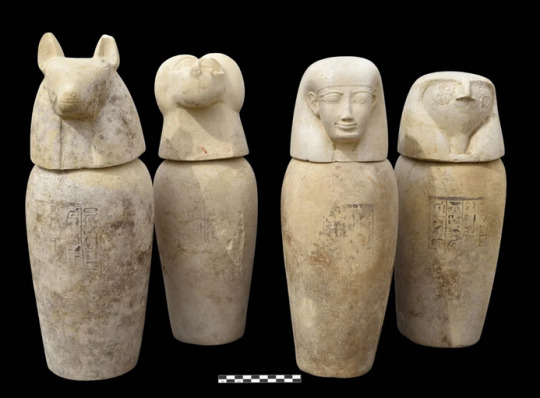
Walls of ancient Greek colony of Selinunte discovered
Italian authorities announced a series of new discoveries at the site of Selinunte that underscore the city’s illustrious past
A life-sized statue of a bejeweled ancient priestess is unearthed in Pompeii
Archaeologists in Pompeii have made the astonishing discovery of two life-sized relief sculptures of a man and a woman draped in classical robes. The pair, possibly husband and wife, stand within a niche on the boundary wall of a monumental ancient tomb.
Ukrainian soldiers unearth ancient Greek burial
Ukrainian soldiers digging defensive fortifications stumbled upon an ancient Greek burial site in southern Ukraine.

Tiny pot!
Ancient mausoleum with gladiator’s epitaph unearthed in Italy
Archaeologists excavating a necropolis in Liternum Archaeological Park in Campania, southern Italy, have uncovered two ornate funerary enclosures, one of which belonged to a gladiator and bears an epitaph etched in marble.
Researchers study erratic boulders from Frosh Giant legends
A study funded by The National Science Centre, Poland, has analysed both the geological and mythical origins of the erratic boulders scattered across northern Poland.
Rare wall paintings found in Cumbria show tastes of well-off Tudors
Rare and fantastical 16th-century wall paintings which shine light on the interior design tastes of well-off Tudors have been revealed in a former hunting lodge.
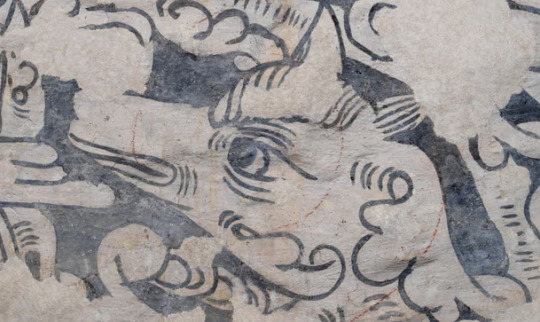
3-year-old picks up 'beautiful stone,' discovers 3,800-year-old scarab amulet in Israel
A 3-year-old girl who was walking with her family along a trail in Israel unexpectedly found a piece of history: a 3,800-year-old scarab amulet.
Extensive Roman settlement found beyond the borders of the Roman Empire
Archaeologists excavating in Delbrück-Bentfeld, northwestern Germany, have uncovered evidence of an extensive Roman-era settlement beyond the borders of the Roman Empire.
More caves discovered in Nottingham’s hidden subterranean world
Nottingham, nestled in England’s East Midlands, is famously known as the legendary home of Robin Hood. But beyond its folklore, the city also boasts the UK’s largest network of caves, carved by hand into the soft sandstone bedrock as early as the 9th century AD.
Stunning reconstruction reveals warrior and his weapons from 4,000-year-old burial in Siberia
A new full-body reconstruction depicts a warrior wearing armor and holding weapons, all of which were found in a 4,000-year-old burial in Siberia.
Hallstatt dagger discovered on Baltic Coast
Researchers from the St. Cordula Association for the Protection of Monuments have discovered a rare Hallstatt-era dagger, revealed after a storm caused a section of a Baltic Sea cliff to collapse.
Unknown human lineage lived in 'Green Sahara' 7,000 years ago, ancient DNA reveals
Researchers analyzed the ancient DNA of two mummies from what is now Libya to learn about people who lived in the "Green Sahara" 7,000 years ago.
AI assists archaeologist in mapping Angkorian-period structures
Archaeologists have created deep learning models, specifically with DeepLab V3+, for semantic segmentation to identify previously unknown reservoirs from the Angkor period.
Researchers posit new theory about children's role in prehistory
A new study suggests that children may have played a special role as mediators between the physical and spiritual worlds,
Traces of Ecuador’s first colonial-era city unearthed in Riobamba
Archaeologists from Ecuador’s National Institute of Cultural Heritage have uncovered remnants of an early colonial-era city that was destroyed by a devastating earthquake in 1797.
Oldest vanilla pod in Europe found in Prague
Excavations within Prague Castle yielded the oldest vanilla bean pod in Europe. Radiocarbon dating indicates that it was placed there between 1513 and 1666, a time that coincided with the reign of Holy Roman Emperor Rudolf II.
Museums
From Guy Burgess’s briefcase to microdots secreted in talc, an exhibition reveals remarkable items from the agency’s archives – and the extraordinary stories behind them
Take two Van Goghs daily: the growing popularity of museum prescriptions
Research backs schemes that encourage doctors to prescribe time in cultural institutions to boost mental health and reduce loneliness
Smithsonian director pledges museum’s independence amid White House order of internal review
The Smithsonian Institution’s leadership is standing firm after the Trump administration ordered a review last month of its exhibits, accusing the museum network of pushing a “race-centered ideology.”
Dozens of museum agency workers put on leave amid Trump overhaul
Processing of 2025 grant applications has been halted after Trump moved to dismantle the Institute of Museum and Library Services.
US museums seek to provide safe spaces for LGBTQ+ communities amid government rollbacks of their rights
As Republicans and the Trump administration target DEI initiatives and queer and trans communities, vocal leaders at a few institutions are standing firm
Three historical treasures rescued from London’s River Thames
Thanks to the efforts of mudlarks, Londoners can marvel at Tudor headwear and an elaborate Viking weapon.
God, I wish I could see this exhibit
'Last in England' smashed medieval statue recreated
A 15th century statue that was found smashed into 170 fragments behind a church wall has been painstakingly pieced together using computer animation.
Museums in southern Brazil still recovering after last year’s floods
Damage and destruction decimated visitor numbers to cultural events and institutions last year but optimism is high they will return in 2025
Yorkshire Museum crowdfunds to acquire ‘game-changing’ iron age hoard
The Yorkshire Museum in York is close to raising £30,000 through a crowdfunding campaign to acquire a major iron age hoard recently discovered in the local area by a metal detectorist.
Medieval scroll found in shoebox goes on display
A rare medieval illuminated manuscript uncovered in the archive of a York convent is going on display for the very first time.
Museums are losing social media followers amid users' mass X-odus
Some institutions have ditched their accounts in protest, while others have chosen to “quiet quit” and stopped posting on the Elon Musk-owned platform
Repatriation
The famed museum recently returned a 12th-century Buddha sculpture that it says was stolen from the Kathmandu Valley. However, the institute’s announcement failed to mention the statue had once belonged to wealthy donor Marilynn Alsdorf.
Heritage at risk
Videos of Sudan’s national museum showing empty rooms, piles of rubble and broken artefacts posted on social media after the Sudanese army recaptured the area from the paramilitary Rapid Support Forces in recent days show the extent of looting of the country’s antiquities.
EPA head shutters agency’s National Environmental Museum
In a statement issued on March 31, EPA administrator Lee Zeldin said the closure would save taxpayers about $600,000 per year. The small museum was created in 2016, dedicated to the nation’s environmental history, and included exhibits about prevention measures during the Covid-19 pandemic, environmental justice, and efforts to address climate change.
$600,000 a year is like one day of the military budget
ETA: I have been informed it's actually less than 30 seconds of the daily military budget o_O
Historians condemn executive order targeting Smithsonian
The American Historical Association, a D.C.-based advocacy group, has issued a statement condemning a recent White House executive order targeting the Smithsonian Institution, which relies on federal funding to drive a significant part of its operation.
New York Attorney General sues Trump administration over museum and library funding cuts
New York State Attorney General Letitia James has filed a lawsuit—alongside 20 other attorneys general—against the Trump administration over an executive order that effectively shuts down three federal agencies responsible for supporting libraries, museums, minority-owned businesses, and labor mediation services.
What the dismantling of USAID means for world heritage
Does USAID still exist? For the heritage world, this – and the fate of heritage projects connected to shrinking amounts of development funding more generally – is a pressing one. Building on previous American efforts in technical assistance during the early years of the cold war, the Kennedy administration founded USAID in 1961 at the start of the UN’s first ‘Development Decade’. Under the second Trump administration, however, the organisation has found itself cut to ribbons.
Odds and ends
Amid the site in rural Jamaica that once belonged to a Guardian financier may lie a treasure trove of artefacts that tell the story of Britain’s history of colonisation and enslavement.
Bid to boost Hadrian's Wall dog ranger volunteers
Volunteer dog rangers are being recruited to help visitors at Hadrian's Wall. Current rangers - golden retriever Mr Darcy and Bear, a mioritic shepherd dog - have been walking the area since last summer along with their owners, who offer advice and hand out poo bags, water and treats.
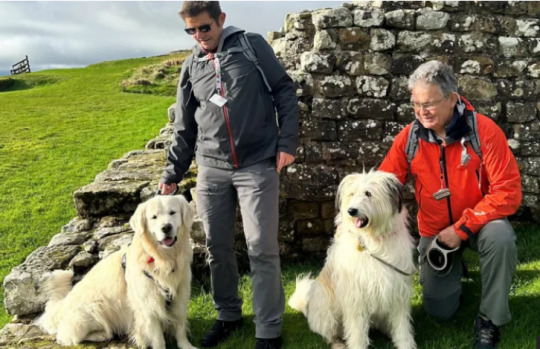
The best museum volunteers
Salvaging the historic tiles of California’s burned fireplaces
After devastating fires blazed through the region, residents are holding on to the intricate glazed tiles that survived — small but meaningful remnants of their homes.
Dublin's Molly Malone statue to get stewards to stop 'groping'
Stewards are to be stationed next to a statue of Molly Malone in Dublin to discourage people from touching it. Dublin City Council is running a pilot scheme for a week in May after complaints of people groping the sculpture's breasts.

Cute when it's a dog statue, weird and kind of gross when it's a woman
'I love my country': Ken Burns on showing the dark parts of US history
Ahead of his upcoming PBS documentary, The American Revolution, acclaimed film-maker Ken Burns tells BBC special correspondent Katty Kay about his unique approach to chronicling US history, from war and conflict to baseball and jazz.
In search of Greece's once-great Jewish city
Once home to a thriving Jewish majority, Thessaloniki holds fragments of a lost world. One traveller's journey to find them leads to something even more powerful: living memory.
Point:
Counterpoint:
Dinosaur tracks uncovered at site of Bonnie Prince Charlie’s refuge
When Bonnie Prince Charlie fled the Scottish Highlands after defeat at the Battle of Culloden, his route may have crossed the fossilised footsteps of massive meat-eating dinosaurs, researchers say.
Bonnie Prince Charlie being eaten by a theropod would be an incredible ending to Outlander
#heritage news of the week#museums#it's looking grim for us institutions#archaeology#history#more historic sites should have dog volunteers#also stop groping molly malone you weirdos#paleontology#the post is extra long this week
12 notes
·
View notes
Text
Rwby fantasy au part 2 Dragokin
Lets explore some of the cultures in this world. Starting with the Dragokin. The oldest of the species that live in this word. Are said to be the first one to be ever made by the brothers. They say they were the closest to them due to this fact and that they were gifted to go into a more draconic form like the gods themselves.
Of course this kind of attitude rubs the wrong way with a lot of the other races. Thus relation to them are always on thin ice. Most definitely to the humans and Faunus. The second and and third(in some places) races that came after them. Being how they were consider lesser to the Dragokin for the longest time. Before Humans and Faunus learn of magic and beast taming to even the fields against them. And helping the other races with Dragokin defenses. When they showed up.
In recent year the attitude is starting to lighten up due to head Dragokin chief Sienna. In Dwarf words, Sienna is finally making the rest of her kind to actually act there age and not be a bunch of children using there age to rule over everyone.
They are located at the dragon like land mass known has Wyrm. They architecture being like Angkorian architecture. There homes being quite big and spaces has Dragokin love sleeping in there dragon states. There omnivorous like the rest of the races but they prefer primarily eat meat. Such has fish and avian. There primary trade are there scales, claw trimmings and fangs. Due to these material can be melted and mix with say steel and such to make it stronger or and core material in making the power orbs that power machines and other things for the other races.
Quite a few of them go out and become mercs for hire. Usually highly sought after has they there elemental breath, dragon state and there tremendous strength usually make any job that need someone dead be a breeze.
7 notes
·
View notes
Text

Excerpts:
"After decades of turmoil, in 1181 Jayavarman VII restored order to the Angkor Empire by embracing Buddhism and introducing an unprecedented public healthcare programme."
He suffered the illnesses of his subjects more than his own; because it is the pain of the public that is the pain of kings rather than their own pain.
So reads a 12th-century stele, marking the foundation of a hospital temple near the banks of the Mekong River. The same words were inscribed at multiple hospital temples across the vast Angkorian Empire, which, at its height in the 11th and 12th centuries, covered most of South-east Asia from its centre at Angkor, in present-day Cambodia. The inscription refers to Jayavarman VII, the first Buddhist king of Angkor."
---
"Along with this central ‘hospital’ temple, inscriptions state that Jayavarman VII founded an additional 102 hospitals. These were probably open to all, although how such care was paid for is unknown. People may have had to make a donation, but it is possible that healthcare was offered without charge. Each hospital would have contained a shrine to Bhaisajyaguru, the Buddha of medicine and healing. Before entering Buddhahood, Bhaisajyaguru made a vow to help the physical and mental health of all living beings. The hospital edicts state that just hearing the name Bhaisajyaguru was enough to cure all ills."
In addition to ritual and spiritual healthcare, these hospitals also offered healing in a manner more akin to ‘modern’ medicine. The inscriptions give an inventory of staff and supplies. Each hospital was home to achar – priests – and a large team of medical workers, including two doctors, two apothecaries, eight nurses and six assistants. There were also guards, cooks, rice-makers and servants. The medical team offered diagnostic testing, most likely by reading the pulse." ...
"The hospitals also prescribed medicines, including honey, butter, oil and molasses. It is highly probable that medical alchemy formed a large part of the healthcare service at Angkor. An inscription at Ta Prohm temple lists royal donations of metals and apparatus that would have been used for alchemy, including mercury sulfide and a gold cauldron." ...
"Evidence of these medical practices are found in the diary of Zhou Daguan, a Chinese envoy who visited Angkor in the 13th century. In his vivid account of daily life at Angkor, he wrote that mercury and sulphur were imported from China. He also recorded that people cured disease by ‘plunging into water and repeatedly washing the head’, the kind of curative treatment perhaps offered at Neak Pean." ...
A more recent article:
---
The world's first public health-care system was created in what is now Cambodia over 800 years ago. The USA still doesn't have one, and the UK's is being destroyed by its government. Many other countries lack any kind of reliable healthcare.
And the effectiveness of the Khmer healthcare isn't the point. They did the best they could with the knowledge they had at the time.
5 notes
·
View notes
Text
Enhance Your Khmer General Knowledge with Fun Quizzes
Are you ready to test your knowledge of Khmer general knowledge? Whether you are a local or someone interested in learning about Cambodia's rich history, culture, and traditions, taking a Khmer general knowledge quiz is a great way to engage with the fascinating world of Khmer culture.
From Khmer quiz questions about ancient traditions to modern developments, these quizzes offer a fun and educational experience for everyone!
Exploring Khmer Culture and Traditions
Cambodia's rich cultural heritage is one of the most fascinating aspects of the country. Khmer culture and traditions are deeply rooted in centuries of history, religion, and community practices. Whether it's through festivals, traditional clothing, or art, learning about Khmer traditions is essential for anyone interested in understanding the essence of Cambodia. Taking part in a Khmer general knowledge quiz helps in exploring these rich cultural elements in a fun way.
Here are some interesting areas you can explore through quiz questions:
Khmer Traditions: From weddings to religious ceremonies, Khmer culture is filled with unique practices that have been passed down for generations.
Historical Landmarks: Cambodia is home to the world-renowned Angkor Wat, but many other historical sites reflect the grandeur of Khmer history.
Festivals: Festivals like Pchum Ben and Khmer New Year are integral to the country's cultural identity, and quiz questions often explore their origins and significance.
Khmer Educational Resources: A Gateway to Learning
If you want to deepen your understanding of Khmer history, geography, and culture, there are numerous Khmer educational resources available. These resources provide a well-rounded look at everything from the Khmer education system to notable figures in Cambodian history. By engaging with these materials, students, teachers, and general enthusiasts can prepare for quizzes that test their knowledge in exciting and challenging ways.
In addition to learning about the Khmer tradition and culture, participants can expect to find quiz questions that focus on:
Historical Events in Cambodia: Covering everything from the Angkorian era to modern political developments.
Geography: How well do you know Cambodia’s provinces, rivers, and mountain ranges?
Current Events: Keeping up with the latest happenings in Cambodia’s growing economy and changing political landscape.
General Knowledge Quizzes: Engaging and Fun
General knowledge quizzes are not only an excellent way to test what you know but also an engaging way to learn more. A Khmer general knowledge quiz with answers is especially useful because it provides instant feedback, allowing participants to learn and improve their understanding of Cambodia.
These quizzes may cover:
Pop Culture: Who are some famous Khmer actors or musicians? What recent movies or TV shows have gained popularity in Cambodia?
Khmer Legends: Explore fascinating stories from ancient Khmer mythology, including tales of gods, demons, and legendary kings.
For example, a question might ask: "What is the name of the famous Cambodian dance that is deeply connected to the country's history and cultural heritage?" (Answer: The Apsara dance).
IQ Teasers and Fun Challenges in Khmer Quizzes
Quizzes aren't just for testing rote facts—they can also include engaging IQ teasers in Khmer, challenging your critical thinking skills and problem-solving abilities. These types of questions stretch your brain and encourage you to think creatively about the world around you.
Participating in a Khmer general knowledge quiz often includes questions about famous landmarks, traditional Khmer foods, and significant figures in Cambodian history. It’s a great way to challenge yourself and learn more about Cambodia while having fun.
Join the Fun and Test Your Khmer Knowledge
If you're looking for a fun way to learn more about Cambodia and its rich cultural heritage, why not take a Khmer general knowledge quiz? Quizzes are a fantastic way to expand your knowledge, whether you're preparing for school, curious about Cambodian history, or simply want to challenge yourself with some fun facts.
0 notes
Text
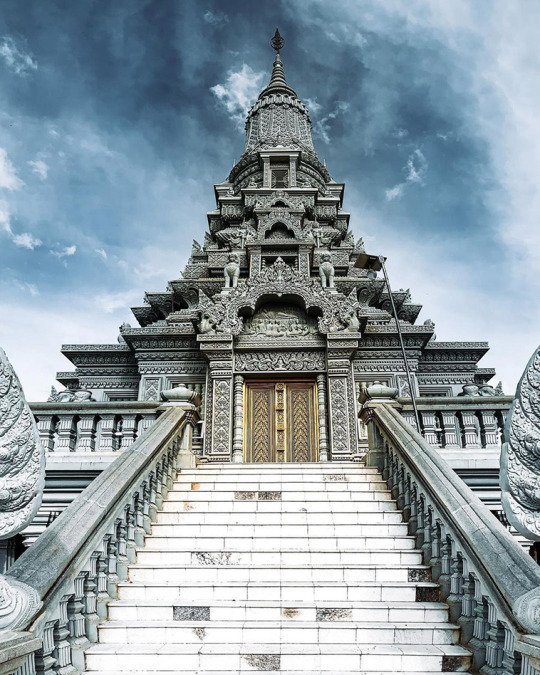
alesmartan
Ancient Capital of Cambodia: Oudong
Also known as the Capital of the Past Kings, the ancient capital of Cambodia, Oudong, is a worthy World Heritage Site with a long history. The city was the capital of the Cambodian Kingdom for more than 200 years. Until the 15th century, Cambodia was a part of the Khmer Empire and Angkor was their capital. However, as the French took control of the country when the Khmer fell from power, Cambodia entered its dark ages and the capital became Oudong. Very little information about those times was ever recorded; however, the ancient capital is one of the most culturally important and visually impressive relics of the post-Angkorian era.

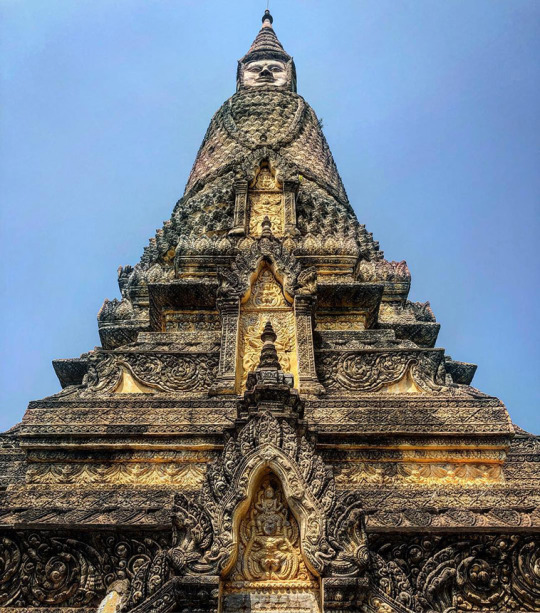



Mikerocksnz
#alesmartan#cambodia#oudong#capital of the past kings#architecture#world heritage site#cambodian kingdom#khmer empire#angkor#history#Mikerocksnz#photographer
1 note
·
View note
Text
[Video] Les fouilles archéologiques du site de Vat Sang'O 5, province de Champassak, Sud-Laos
Excavations at Vat Sang'O 5 in South Laos, led by EFEO's Christine Hawixbrock, reveal a high-ranking pre-Angkorian site, with support from Lao PDR and international funding. #southeastasianarchaeology #Laos #VatSangO5 #vatphou
via EFEO/You Tube, 16 July 2024: Since 2014, excavations at Vat Sang’O 5 in Champassak, South Laos, led by Christine Hawixbrock of EFEO, have uncovered a high-ranking pre-Angkorian habitat. The French Archaeological Mission collaborates with Lao PDR’s Ministry of Information, Culture and Tourism and the Vat Phu-Champasak World Heritage Site, funded by EFEO, AFD, and France’s Ministry of Europe…

View On WordPress
0 notes
Text
[ad_1] The once small market town of Siem Reap has seen the fastest development in Southeast Asia thanks to the increasing popularity of Angkor Wat. Here’s what to do in Siem Reap when you’re not engrossed with incredible religious architecture. By: Paul Healy | Published: 9 Mar 2024 span box-shadow: none !important; filter: brightness(1) !important; ]]> As the base from where to explore the temples of Angkor Wat, Siem Reap appears to be growing at a pace that it can only just keep up with. Initially the domain of hardy backpackers, Siem Reap has over the years, morphed into a cosmopolitan hub. Trendy hotels, designer spas and high-end restaurants combine with local Asian markets and riverside food stalls to keep you occupied in between exploring the temples. A fascinating and confronting history fills museums with stark reminders of the past and community projects are a testament to the resilient nature of the Cambodian people. There are plenty of worthy things to do in Siem Reap between temple visits, here’s our guide to seeing the best of them. OLD MARKET MAP – THINGS TO DO IN SIEM REAP The centre of Siem Reap is compact and easy to get around most of the sites on foot, or by tuk-tuk. However, to make the most of your visit, you will want to travel out to the temples and Tonlé Sap. >> How to use this map / Click on the top left of the map to display the list of locations, then click on the locations to display further information. Click on the top right corner of the map to open a larger version in a new tab or the star to save to your Google Maps. 1. ANGKOR WAT TEMPLES The main reason to come to Siem Reap is undoubtedly to visit the Angkor Wat temples. Representing the height of the Cambodian Empire and their devotion to both Hinduism and Buddhism, the temples near Siem Reap are some of the most interesting historical landmarks in the world. We cover all the information you need including the most important temples not to miss, and some more remote ones that are worth seeing in our guide to visiting the Angkor Wat Temples. ANGKOR WAT ANGKOR THOM 2. ANGKOR NATIONAL MUSEUM The Angkor National Museum is the main museum in Siem Reap and a good starting point for understanding the Khmer Empire. It covers all periods of Angkorian architecture with a helpful rundown of the Khmer kings and all the temples associated with their respective reins. The detailed descriptions of the Hindu and Buddhist iconography helps decipher the incredible bas-reliefs adorning many of the temples around Siem Reap. If possible, it would be well worth going to the Angkor National Museum before you see the temples. Entry is $12 and the museum has comprehensive information boards in English, so you don’t need to spend the extra $5 on the audio guide. Allow 2 to 3 hours to see everything. ANGKOR NATIONAL MUSEUM 3. CAMBODIAN LANDMINE MUSEUM Each year, dozens of people are killed or injured by landmines left behind from the civil war. The Cambodian Landmine Museum was started by Aki Ra who was taken by his family at the age of 5 and recruited into the Khmer Rouge. After the war, he dedicated his life to ridding Cambodia of landmines and other unexploded ordinance that still litter the countryside. It’s a poignant exhibition to stories of Cambodian lives permanently affected by landmines, as well as technical information about the ongoing work to remove them. Entry is $5 and a free audio guide is provided by a QR code you scan on your phone. The museum is funded by visitor fees and part of the ticket price goes to several charitable causes related to helping people hurt by landmines. The Cambodian Landmine Museum is 25 kilometres north of Siem Reap but it’s easy to see on a day trip to Beng Melea and Banteay Sri. (See below) CAMBODIA LANDMINE MUSEUM 4. WAR MUSEUM CAMBODIA Unlike the Landmine Museum, the War Museum Cambodia has virtually no information and the exhibition consists of not much more than several rusted tanks dotted around a gr
assy garden. Occasionally, it’s possible to get a guided tour from an ex-army combatant who provides a fascinating and harrowing account of the war from his personal perspective. If a guided tour is available, the War Museum is an excellent experience in Siem Reap. If a tour is not possible, we wouldn’t recommend going. We suggest getting a Tuk Tuk out to the museum and asking if a guide is available before you purchase your tickets. Entry is $5 per person. Guided tours, if available, are no extra charge. The museum is a 10-minute Tuk Tuk ride from the centre of Siem Reap. Expect to pay around $5 for the Tuk Tuk driver to take you out, wait for you, then take you back. CAMBODIAN WAR MUSEUM 5. SIEM REAP WATS If you’re not templed-out from visiting the sights of Angkor Wat, there are 2 more temples in the centre of Siem Reap that are worth popping in to. Wat Bo is one of the oldest Buddhist temples in Siem Reap. It has several well-preserved paintings depicting famous Hindu and Buddhist stories. Entry is free and you’ll only need a short time to stroll around. Wat Preah Prom Rath is one of the most beautiful temples in Siem Reap town. It’s decorated with colourful wall paintings and statues. It’s located just near the Old Market. Wat Dam Nak is an old royal palace that today promotes a better understanding of Khmer culture with an on-site library. WAT BO 6. PUB STREET You’ll hear Pub Street before you get to it. With pumping music competing across often empty bars, the vibe is hopeful, teetering towards desperate. It’s hard to tell whether it’s a vision of what Cambodians think western tourists want on their travels, or the result of years of backpacker demand. Whatever the cause, Pub Street (Street 8) is the centre of Siem Reap’s nightlife. Many of the joints are open 24/7 and you’ll be able to find all types of food and plenty of bars. A few places on Pub Street are still offering fish massage, where Red Garra fish chew dead skin off your feet. Apart from the fact that the fish only eat dead skin because they’re so hungry, the tubs contain fish waste and are a breeding ground for bacteria. Most countries have banned the practice and it’s an experience to avoid in Siem Reap. PUB STREET 7. STREET 26 For a calmer experience, we highly recommend heading to Street 26, on the west side of the river. It’s a quiet street with a few excellent bars and restaurants. Banlle Vegetarian Restaurant // Banlle has a nice outdoor terrace with a small menu of Khmer cuisine and efficient professional service. For dessert, try the ice cream shop at the entrance. Laundry // Just across the road from Banlle, Laundry is a smart bar with occasional live music. Miss Wong // Miss Wong is a cocktail bar and Dim Sum Restaurant inspired by 1920s Shanghai. The décor is beautiful, and the cocktails are decent value. Tevy’s Place // Tevy’s Place is an excellent value Cambodian restaurant run by an almost all-female staff. LAUNDRY MISS WONG BANLLE 8. PHARE, THE CAMBODIAN CIRCUS Phare is a fun night out in Siem Reap and a great way to support the local community. The 1-hour performance is a mix of interpretive dance and aerobic skill, set to a local cultural story. Witness impressive performances under the intimate big top with an added dose of Cambodian humour. The venue opens at 6 pm where you can have dinner from vendors selling curries, noodles, grilled dishes and burgers. There’s also a bar so you can have a beer or a cocktail while watching a performance from the local school children on a stage in the outdoor food court. You need to buy coupons to make purchases from the food vendors and the bar. Ticket prices are $18, $28, $38, which you can buy online in advance. It’s not a very big venue so there’s not much benefit in getting the more expensive tickets. The show starts at 8 pm. PHARE, THE CAMBODIAN CIRCUS 9. APOPO HERO RATS Apopo is a Belgian NGO that trains rats to sniff out landmines, dramatically increasing detection rates in the
countryside. Their highly sensitive sense of smell and the fact that they are too small to trigger the explosives makes them the ideal candidate for detecting landmines. At the visitor centre you can learn about how much the rats have achieved and meet them in person. 10. OLD MARKET On the eastern side of the river, the Old Market is a warren of stalls providing a great opportunity to do some shopping or just soak up the atmosphere of an Asian market. The stalls on the east side cater to tourists selling trinkets, souvenirs, t-shirts and scarfs. The western edge is the fresh food market with locals stocking up on fruit and veg. Seamstress and hairdressers are busy working away alongside a couple of street food vendors. It’s a great photo opportunity even if you’re not looking to buy anything. OLD MARKET 11. NIGHTLY STREET FOOD MARKET The night market straddles both sides of the river between the 2 bridges, both called Art Market Bridge. On the eastern side of the river, you’ll find a plethora of stalls selling local food which you eat on little tables by the banks of the river. The crowd and the food, gets progressively more local as you head towards the Fountain Dragon’s roundabout. The western side is more subdued with around 4 or 5 stalls along the river. This is the section of the market we recommend trying. It was the best and cheapest food we found in Siem Reap. WHERE TO EAT IN SIEM REAP NIGHT MARKET – The best food in Siem Reap is from the street food stalls on the western side of the river. WILD – Spring rolls only in a lovely garden setting with a great cocktail list. MISS WONG – Chinese Dim Sum in a Shanghai-inspired townhouse. BANLLE – Thai and Khmer classic vegetarian dishes in this stylish restaurant. TEVY’S PLACE – Traditional Cambodian cooking from a renowned chef. THE SUGAR PALM – The fanciest food in Siem Reap, perfect if you have a special occasion to celebrate. SAMBOO – Great Thai and Cambodia cooking with disorganised service. WILD 12. TONLÉ SAP Tonlé Sap is a large lake that starts around 15 kilometres southwest of Siem Reap. It’s the lifeblood of the area with more than 3 million people living on or around the lake. There are several excursions to Tonlé Sap where you can experience this unique culture. We recommend the Kompong Pluk tour which was a fantastic experience without being overly touristy. KOMPONG PLUK – OUR PICK Kompong Pluck is a village of bamboo skyscrapers, towering on high stilts on the banks of Tonlé Sap. The tour includes a stroll through the village where you can witness daily life in this friendly village, followed by an optional canoe ride through the floating forest ($10 per boat for 2 people). The trips finish watching sunset on a floating deck in the middle of the lake, where you can order dinner and drinks. CHONG KNEAS Chong Kneas is the closest floating village to Siem Reap but it has become overrun with tourist groups and tainted by tour guide scams. But it’s only 11 kilometres from town so you can hire a tuk tuk or rent a bike to cycle out without taking up too much time. There’s a set entrance fee and boat prices to take you out to the village. KOMPONG KHLEANG Komgpong Khleang is the largest community on Tonlé Sap, with stilted houses set high above the lake to combat the vast changes in water level. At 50 kilometres from Siem Reap it’s much quieter than the other communities on the lake, making it a good reason to visit. Homestays are available for an overnight experience. PREK TOAL Prek Toal is a bird sanctuary with a significant variety of rare breeds. From December to February when the water dries up in other parts of the lake, birds flock to Prek Toal making it a birder’s paradise. It’s difficult to get to by yourself with several modes of transport involved, but tours include a stop at the village of Prek Toal which is a far more rewarding experience than the villages closer to Siem Reap. However, to
urs are very expensive (around $200) therefore, it’s probably only something to consider for very keen bird enthusiasts. WHERE TO STAY Siem Reap has embraced tourism with plenty of accommodation options from budget backpacker lodges to luxurious hotels. Here are a few recommendations from us. RATEPROPERTYPRICES$ONEDERZ SIEM REAP Located beside the Old Market, this excellent hostel has private rooms and dormitories with free Wifi and two swimming pools.booking.comhotels.com$$JAYA HOUSE RIVER PARK Located outside the busy area in a tropical garden, this beautiful property has excellent Wifi, air-conditioning, and a very enticing pool.booking.comhotels.com$$$BOPHA WAT BO RESIDENCE A smart clean hotel with a pool in a lovely garden setting. The breakfast is superb and it’s just a short stroll into the centre of town. booking.comhotels.com GETTING THERE Siem Reap has a shiny new airport thanks to Chinese investment. To protect the temples of Angkor, it’s located 45 kilometres east of the town centre. The best way to get from the airport is to organise a pick-up from your hotel which should cost around $30. Taxis are few and far between and the airport bus ($8) currently only has 6 services per day, making it a fairly ineffective option. It takes around 50 minutes to drive into Siem Reap. TONLÉ SAP ANYWHERE WE ROAM ISREADER-SUPPORTED When you buy through links on our site, we may earn a small affiliate commission at no extra cost to you. You can also shout us a coffee. Thanks for your support – Paul & Mark. INSTAGRAM | FACEBOOK [ad_2] Source link
0 notes
Text
“Details matter, from the specific moment when an inscription was completed, associated with the specific intentions of an individual in the larger socio-political context in which they worked; through the schedules of daily routes and walking distances to collect water; the timing of 5–6-km travel distances to and from markets and workplaces; the fortnightly shifts of thousands of people across Angkor with the waxing and waning of the moon; up to the slow incessant movement of water through the canal networks. Angkor’s space and time were structured and organised at different magnitudes”
- Prologue from The Angkorian World
1 note
·
View note
Text
Hey, guys! Want to vote on the best 6th-10th Century script (writing system) that I, Gecko, personally like?
Of course you do! Writing systems are SO COOL!
And here's a bit about each of the contenders:
Arabic (Naskh Script)
Derived from the Aramaic Script, which grew out of Phoenician, Arabic has a variety of forms. The Naskh script is the one I find the most beautiful, with it's extreme variation on character length and height. I also love the use of multiples colours for Ḥarakāt (vowel marks and other diacritics). Add in the elegant curves and solid lines, and Naskh Script becomes one of the most stylish scripts around.

Latin (Insular Script)
Derived from Greek, the Latin alphabet is usually a competent and pleasant mix of lines and curves, uprights and descenders. Insular script plays with these qualities, and the result is electric! many of the uprights (t, d, f) are gone. New descenders are added (r, s, f). Horizontal lines take a new prominence. Line weight is increased, and the curves become more angular. Something old to us becomes new again.

Chinese (Semi-Cursive Script)
There are many ways to write Hanzi (Chinese characters), and Semi-Cursive Script manages to combine the best qualities of most of them! The expressive curves and flow of a cursive script. The solid shapes and readability of Regular Script. One of the joys of Hanzi is the visual interest of so many unique characters; which share components, but use them differently. Semi-Cursive keeps much of that interest, while also providing a dynamic energy and movement.
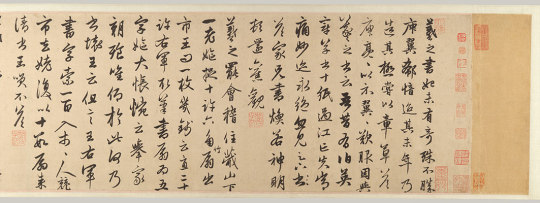
Sogdian (Cursive Script)
Derived from the Syriac script, which grew out of the Aramaic Script, the Sogdian Alphabet was developed by traders who met most of the major cultures of the Old World, and let all of those cultures affect their language and writing. Sogdian can be written write to left, like most Aramaic scripts, but also top to bottom, like the Chinese Scripts of their main trade partner. Curvy cursive lines, and characters of wildly varying length, give this script a interesting sense of flow.
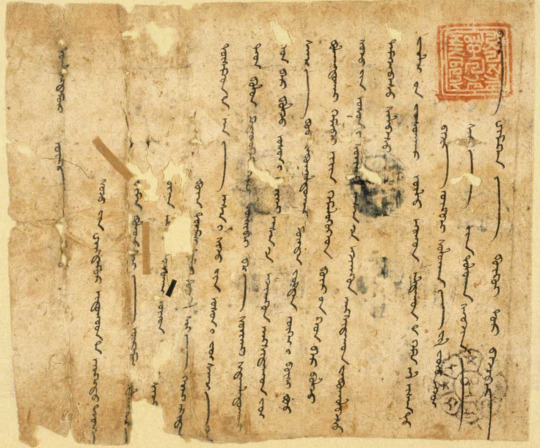
Hebrew (Ktav Ashuri Script with Palestinian Vocalization)
Another offshoot of the (Imperial) Aramaic Script, the Hebrew Alphabet has a really interesting, heavy, square, solid feel. In contrast, Palestinian Voicing (an extinct form of writing vowels where all of them were above the consonants) is really light, stacked on top their vowels in little floaty towers. It's a cool combination!
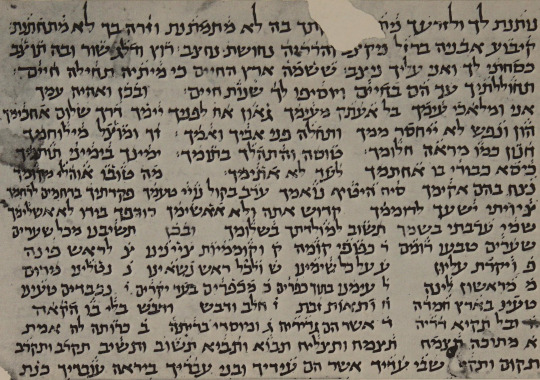
Maya (Classical Maya Script)
The most famous script of the Americas, Maya has one of the most unique reading orders of any script. Characters are written in blocks, which are then read in a zigzag (right, and then down-left) pattern. Full of heads (both animal and human), torches, seeds, and other half-identifiable shapes, Maya texts are works of art, and the more you study them, the more beautiful they become.

Nubian (Old Nubian Script)
Derived from Greek with additional letters from Coptic (Egyptian) and Meroitic (a previous Nubian culture). Lines above letters are used to skip parts of words deemed unnecessary. The mixture of rectangles and triangles, heavy and light line weights - it reminds me of telegrams, or early typewriter text. I love it!
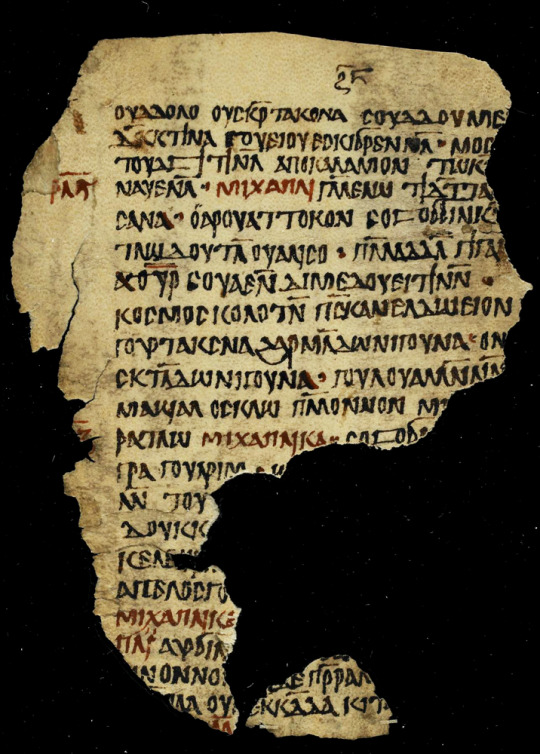
Khmer (Angkorian Khmer Script)
Derived from the Pallava Script, which derived from the Brahmi Script, Khmer is probably my favourite script to write. The curves feel so good! The spirals so pleasing! You write consonant clusters by writing little letters below the main one! A joy to create, and a joy to look at.
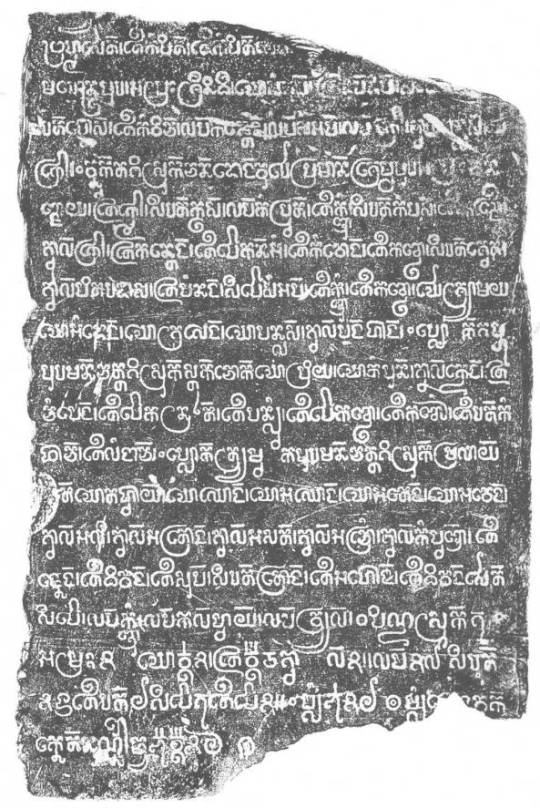
Japanese (Cursive Script)
See these wiggles? They're Chinese characters. Elegant, looking like poetry no matter what they're saying, Cursive Japanese is art. It's also ridiculous. 3 different characters, each with multiple strokes, indicated by wiggling the brush as you draw a line! Most cursive scripts are like this, but the contrast between the square solidness of Regular Script and the flow of Cursive is one of the more extreme. What a delight!
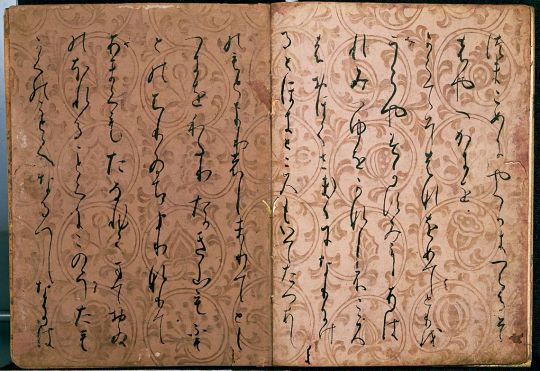
Sanskrit (Siddham Script)
I had SO MANY options for Sanskrit (Brahmi) Scripts, you guys. SO MANY! But in north-west India, during the period I study, this version of Siddham is the prettiest. Look at the curves! Those aren't just decorative, each curvy line that goes above or below the text is a vowel. Consonant clusters are shown by combining the characters together in one spot. The lines at the top haven't yet started connecting, like they do in modern Devanagari, but there's already a sense of it's existence. Such a cool script!
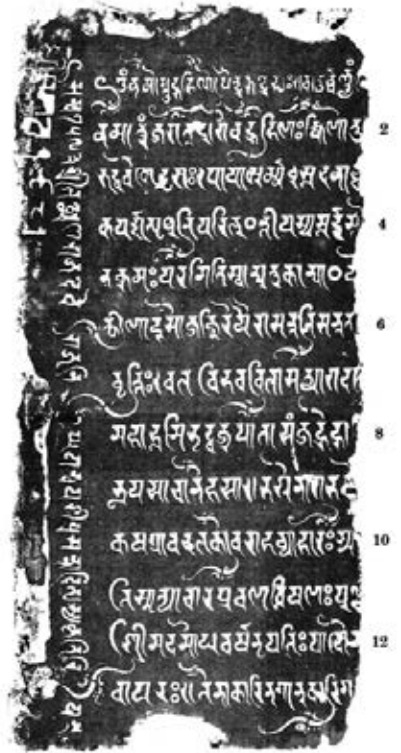
#long post#gecko's polls#calligraphy#scripts#writing systems#arabic#hebrew#khmer#maya#latin#nubian#sanskrit#sogdian#chinese#japanese
233 notes
·
View notes
Text
"A trove of precious jewelry from Cambodia’s past has been repatriated after surfacing in London.
Totaling 77 artifacts from the medieval kingdom of Angkor, they are believed to have been trafficked from the country during the tyranny of the Khmer Rouge and the civil wars that plagued the country during the 20th century.
Angkor was one of the greatest powers in the East between the 9th and 14th centuries. Their theocratic capital of Angkor Wat is considered one of the 7 Wonders of the Medieval World, and today is still the largest religious complex on Earth.
The treasures date squarely to this period of flourishing and some of the crowns are believed to have sat on royal brows. They include items “such as gold and other precious metal pieces from the Pre-Angkorian and Angkorian period including crowns, necklaces, bracelets, belts, earrings, and amulets,” the Cambodian Ministry of Culture and Fine Arts said in a statement.
The items came from the estate of recently-late serial art trafficker Douglas Latchford, who for many years was considered an expert antiquities appraiser, but was later discovered to have worked alongside the Communist Khmer Rouge to traffic hundreds of artifacts from the country.
Now, many of the nation’s historical treasures are returning, and this trove is just the most recent tranche.
Last year, US citizens or institutions returned either voluntarily or by court order, 30 items sold by Latchford, including a 10th-century sculpture of the Hindu god Skanda atop a peacock considered a “masterpiece.”
The year before that, the estate of Latchford, who died in 2020 before he could be convicted of antiquities trafficking, sent back five bronze and sandstone sculptures to Cambodia."
-via Good News Network, 2/22/23
--
Bonus Info:
"The return of the items followed a September 2020 agreement with Latchford's family under which all Cambodian artifacts in their possession would be returned to Cambodia. Other stone and bronze artifacts were returned in September 2021."
-via NPR, 2/21/23
#angkor#cambodia#southeast asia#khmer rouge#antiquities#ancient art#ancient jewelry#ancient history#repatriation#museums#art history#good news#hope#anti colonialism#museum ethics
99 notes
·
View notes
Text

An ancient Angkorian crown that was returned to Cambodia from Britain last Friday. Seventy-seven pieces of lost Angkorian crown jewellery have been returned. Photograph: Wu Changwei/Xinhua News Agency/eyevine
Stolen Trove of Angkor Crown Jewels Returned to Cambodia After Resurfacing in London
Family of British antiquities dealer Douglas Latchford, who died in 2020 while awaiting trial for art trafficking, returns 77 Khmer artefacts
— Agence France-Presse | Monday 20 February 2023
Dozens of pieces of Angkorian crown jewellery stolen from Cambodia, many never seen by the public, have been returned after resurfacing in London, the Cambodian culture ministry said on Monday.
The trove includes crowns, necklaces, amulets and other treasures from the Angkor period, which ran from the ninth to the 14th century AD, when the Khmer empire was a dominant force in south-east Asia.
The ministry said officials in Cambodia received the 77 pieces from the family of British antiquities dealer Douglas Latchford.
Latchford died in 2020 while awaiting trial in the United States for art trafficking, and his family reached an agreement with Cambodia the same year to return his collection of Khmer antiquities.
The collection, which arrived discreetly in Cambodia on Friday, features “gold and other precious metal pieces from the pre-Angkorian and Angkorian period including crowns, necklaces, bracelets, belts, earrings and amulets”, the ministry said.

The trove includes crowns and other treasures from the Angkor period, which ran from the ninth to the 14th century AD. Photograph: Cambodian Ministry of Culture and Fine Arts/Handout via Xinhua
As Cambodia was ravaged by civil wars and a genocide by the Khmer Rouge regime in the 1970s, thousands of antiques were looted and sold through dealers in Thailand and Hong Kong to wealthy buyers and museums in Europe and the US.
US prosecutors have been pushing to return many of the works in recent years.
In 2021, Cambodia received five lost stone and bronze artefacts from the Latchford family.
Last year, the US also returned to Cambodia 30 looted antiquities, including bronze and stone statues of Buddhist and Hindu deities that were carved more than 1,000 years ago.
Cambodia’s culture minister, Phoeurng Sackona, appealed to individuals and museums around the world to return stolen artefacts to the country to contribute to the “reconciliation and healing of Cambodians who went through decades of civil war”.
#Stolen Artifacts#Cambodia 🇰🇭#Stolen Trove of Angkor Crown Jewels 💎#Resurfaced | In London#77 Khmer artefacts#British antiquities dealer | Douglas Latchford
2 notes
·
View notes
Text
oh wow
I can’t believe in the year 2021, I would be talking about Hetalia despite leaving the fandom long, long, long ago...because honestly speaking, Himaruya adding the rest of the Southeast Asian nations is something I can recall back in the hey-days as one of the biggest requests. Ever. I can’t believe it’s been 84 years.
After some digging into the fandom, especially the old fandom days I forgot how terrible it can be I can say the following predictions for the remaining not-yet introduced ASEAN characters (under read more to not clog up the tags/force my followers to see a big block of text of something they most likely don’t know/dislike greatly):
As most of the ASEAN characters introduced are Maritime Southeast Asia countries (and from what I re-discovered of the old fandom days, the most requested), Brunei will be introduced next (if not, given the second introduction).
While not part of ASEAN, Timor-Leste will get introduced; possibly by crashing an ASEAN meeting (due to country’s still pending status of being the eleventh member) with chaos ensure not long afterwards.
I don’t know why, but I picture Timor-Leste being small in stature.
As Vietnam is the only female of ASEAN, Himaruya will add another female character; the other female ASEAN will be Cambodia or Laos. Since Himaruya drawn more male characters than female characters in the Hetalia-verse, it’s likely he would make Cambodia or Laos female, and the other male.
If I have to make a clearer prediction, Cambodia will be male, and Laos will be female. As Greece has his mother Ancient Greece and Egypt has his mother Ancient Egypt, this pattern will continue. Cambodia is the son of Kambuja (though to the rest of the nations/world, Kambuja is better known as the Khmer Empire/Angkorian Empire).
Vietnam, Cambodia, and Laos made up the former French Indochina. From what I dug up into the old fandom days, the three would be siblings, but they are not blood relatives.
Vietnam will be the oldest, Cambodia is the middle child, and Laos is the youngest.
Thailand and Vietnam are dislike by Cambodia and Laos (more Cambodia than Laos). Of course, they all get along fairly well (they’re not close, but they’re polite and civil with one another).
Going by my clearer prediction of Cambodia will be male and Laos will be female, Cambodia will be more visibly hostile towards Vietnam and Thailand, to where it almost gets physically (mainly to Thailand).
Laos is the one who make sure brawls don’t occur. It’s not to say she can’t be hostile, but Laos would prefer to do it verbally than physically.
Cambodia actually gets along better with Thailand due to their similar cultures. Marginally, because sometimes Thailand likes to provoke Cambodia into being hostile (why? Because it’s fun).
Laos has a habit of drinking due to Thailand and Cambodia shenanigan's, and finds herself be close with Vietnam because she’s very level-head in comparison.
This is more of me digging around online and reading up on Cambodian-American and Laotian-American experiences/something that happened IRL and should have no bearing but it’s interesting none the less to make it a prediction: Cambodia and Laos tend to be forgotten by the other nations (excluding their fellow ASEAN members and France), and they bond over their experience. They’re the Canada of ASEAN, only they don’t get mistaken for other ASEAN members, like how Canada gets mistaken for America.
That said, this will be funnier (or not) depending how Himaruya designs them; Himaruya I love your art style and designs, but even I have to admit characters are drawn so similar to one another).
And that’s all I got.
#hetalia#hetalia world stars#hws#hws vietnam#hws thailand#this is a text post#okay so apparently when leaving the fandom#i missed out on the fact hetalia has a new name#that's nice#and the focus shift from ww2 to other periods (mostly modern times)#anyway tagging vietnam and thailand because i mention them in the post
16 notes
·
View notes
Text
Angkor Wat archaeological digs yield new clues to its civilization's decline
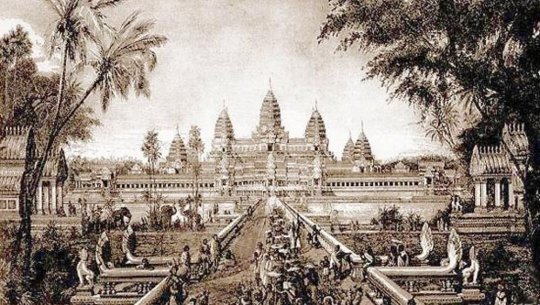
Cambodia's famous temple of Angkor Wat is one of the world's largest religious monuments, visited by over 2 million tourists each year.
It was built in the early 12th century by King Suryavarman II, one of the most famous kings of the Angkorian civilization that lasted from approximately the ninth to 15th centuries. The structure is so strongly associated with Cambodian identity even today that it appears on the nation's flag.
For many years, historians placed the collapse of the Angkor civilization in 1431, when Angkor's capital city was sacked by the Thai Kingdom of Ayutthaya and abandoned. The idea that the Angkorian capital was abandoned also played a part in the 19th-century colonial interpretation of Angkor as a civilization forgotten by the Cambodians and left to decay in the jungle. Read more.
203 notes
·
View notes
Text
Angkor Wat archaeological digs yield new clues to its civilization’s decline
Angkor Wat archaeological digs yield new clues to its civilization’s decline
Republication from the conversation
Angkor Wat (Wikimedia commons)
.
By Alison Kyra Carter
Assistant Professor of Anthropology, University of Oregon
.
Cambodia’s famous temple of Angkor Wat is one of the world’s largest religious monuments, visited by over 2 million tourists each year.
It was built in the early 12th century by King Suryavarman II, one of the most famous kings of the Angkorian…
View On WordPress
1 note
·
View note
Text
Living Vicariously Through the Naga:The Enigma Lives On in Siem Reap…
by: Genie
Ensconced in the rainforest and steeped in centennial mythology, lies the province of Siem Reap, home to the variegated archaeological extravaganza embodied by Angkor, the old seat of the Khmer Empire. Once shrouded in mystery, this verdant area is dotted far and wide with architectural wonders, however a particular quartet of magisterial temple complexes, open to the public today, accounts for much of its widely deserved mystique: Angkor Wat, Angkor Thom, Preah Khan and Ta Prohm.

The historical promenade through Cambodian history could not begin at a better place than Angkor Wat. After a brisk, vertiginous walk over the frontal moats and their tall lily pads by way of the “floating” bridges, Angkor Wat starts etching its “mountainous”, verdigris contours on the horizon, in all its pomp and pageantry. Some tall palm trees here and there, wandering rhesus monkeys, endless meters of loggias reflecting over the water, and monks clad in orange walking back and forth, act as merely the castellated gateway and battlements to King Suryavarman II’s main, multi-story building and its five signature turrets set against a perennial twilight sparkle.

Given the magnitude of this World Heritage structure, it would take more than one afternoon to visit it properly. Suffice it to say, to this day Angkor Wat is the largest standing religious building in the world. Still and all, its essence is to be found primarily in a threefold enigma. First of all, it is per se rather puzzling that Angkor Wat should be originally consecrated to none other than the Hindu divinity Vishnu. Today, Angkor Wat is both Hindu and Buddhist, but considering that Hinduism is not as geographically widespread as Buddhism from India eastwards and that it is an older religious philosophy, it begs a more in-depth question as to what exactly happened. Hence, the (originally and equally) Hindu Ko Samut Teuk Dos legend, also known as Samudra manthan (in Hindi); in other words, The Churning of the Ocean of Milk.
According to this founding epic, Devas (Gods) and Asuras (Demons) were forever at war to dominate the world. Ever more tired and running out of strength, the Devas asked Vishnu for help. As a token for his help, Vishnu asked the Devas to search for Amrita, the Sacred Elixir of Immortality, from the depths of the cosmos. However, because the task was so difficult, the Devas were forced to ally with their antagonists, the power-voracious Asuras. Using Mount Meru as the pivotal point and the King of the Nagas (snakes), Vasuki, as a churning device, both factions placed themselves at different extremities of the Naga and started pulling, while many treasures emerged from the Ocean of Milk. In time, the Asuras, being closer to the head of the Naga, were eventually poisoned by the fumes it exhaled, only managing to save themselves when Amrita was delivered to them by a divinity emerging from the Ocean of Milk. This episode did not go unnoticed by the Devas; they promptly informed Vishnu, who managed, in turn, to steal back Amrita and hand it to the Devas, so that they could reign supreme and banish the Asuras to hell.

This legendary tale represents the second enigma of Angkor Wat, and is virtually “unlocked” in the impossibly beautiful bas-reliefs stretching along the 49 meters of the east gallery, a grand spectacle where what could have been remnants of muted pink, ochre, and terra-cotta hues can still be slightly discerned by the naked eye between carvings. Also unlocked within Angkor Wat is the third enigma, whereby a Naga princess wed the First King of Ancient Cambodia, giving rise to the Cambodian people or Khmer. In this respect, Angkor Wat has various massive balustrades in the shape of the seven-headed Naga, each head representing the seven “races” of the Naga people. A recurring theme in the Angkorian temples, the seven-headed Naga is part and parcel of Khmer cosmology, as are the Apsaras, the celestial dancing creatures whose main purview included entertaining royalty and divinities on earth with their perfunctory expressions.

The hypnotic tour through Khmer chronology continues between Angkor Wat and Angkor Thom, where a short pit-stop to the Baksei Chamkrong temple gives us a taste of what would seem to be yet another enigma. According to various “conspiracy” theories, there are uncanny stylistic similarities between the Mayan Pyramid of the Great Jaguar (in Tikal, Guatemala) and Baksei Chamkrong! Clearly, the knowledge and discoveries acquired thus far on the matter are not enough to reframe history, so to say; nonetheless this testament to the universal aspect of human imagination makes for some quite fascinating journeys!
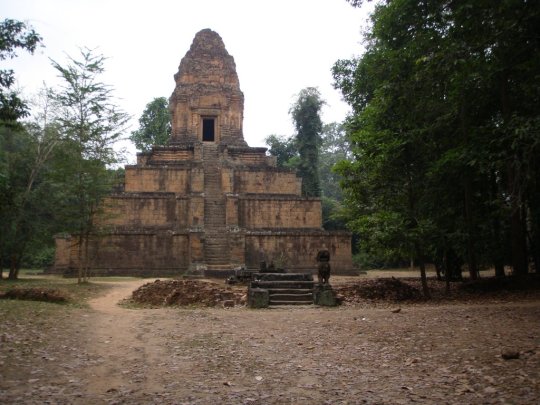
On its part, Angkor Thom, the last capital city of the Khmer Empire, boasts a masterpiece triad of its own, the first of such being King Jayavarman VII’s exquisite 350-meter long Terrace of the Elephants. Once a royal platform to salute his military forces, this terrace features intricate carvings of lions, elephants and Garudas, the bird-like creatures pertaining to Hindu, Buddhist and Jain mythology, and stalwart nemesis of the Nagas. Located just off the Royal Square is the Terrace of the Leper King. Although there was a king with leprosy in Cambodian history, the name derives mainly from the erosion found on the statue of Yama, the God of the Underworld, carved within this site. This terrace might have been used for funerary/cremation rites.

Perhaps the most distinctive temple in Angkor Thom is the “baroque” Prasat Bayon. Entering through the South Gate, one is confronted with nothing short of yet another enigmatic vision, as 200 towering giant faces (four per tower) look down on you with their seraphic smiles and sphinx-like countenances. Although it is unclear whether the faces depict Lokesvara (the Buddhist bodhisattva of compassion) or King Jayavarman VII, the two hypotheses do not necessarily exclude each other. While the bas-reliefs within the temple, portraying military scenes and other mundane events, are also worthy of note, the deeply rooted “intimidation/awe” deriving from the “scoping stares” remains the main highlight of the Bayon. For all we know, they might have been –and still are- quite a bulwark against the evil eye, if anything!


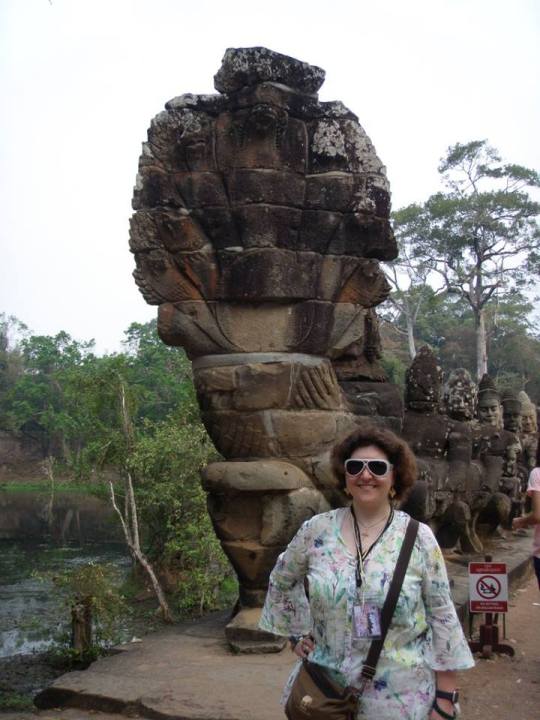
The eternal voyage of the Naga continues in the Neak Pean and Preah Khan temples, located north of Angkor Thom. Upon first impressions, and having to cross a long walkway on swampy waters before reaching the former, it is hard to believe that there might be a temple at the end of the glittering trail. However, Neak Pean juts out from a central sacred pool (believed to represent the mythical Lake Anavatapta and to have healing powers), surrounded by two “underwater” sculptures of the Naga. As regards the latter temple, it is the proof that nature (usually) claims –or ravages, in this case- back its own! At any rate, not even this inevitable and “vengeful” predicament has managed to cover up the ineffable magic of Preah Khan, home to Jayadevi (a sister-wife of King Jayavarman VII), among others. Moss, lychen and ferns slowly brush over the rubble and rickety beams framed by quasi-trompe l’oeil flourishes, while a vast array of delicate carvings, reliefs and friezes, not to mention the standing library ruins and stupa illuminated by the sun, complete this eerie, albeit paradoxically idyllic, setting on the green.
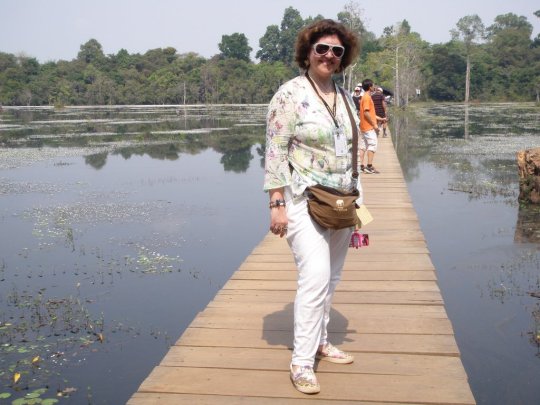

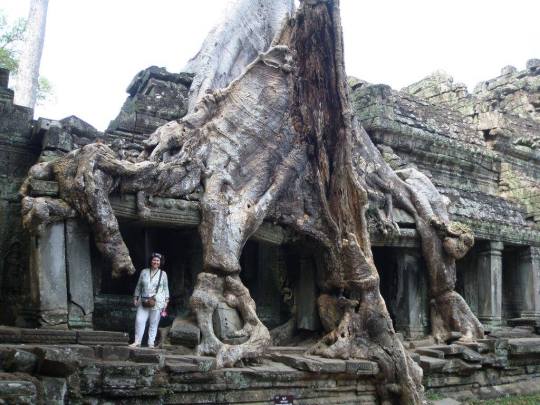


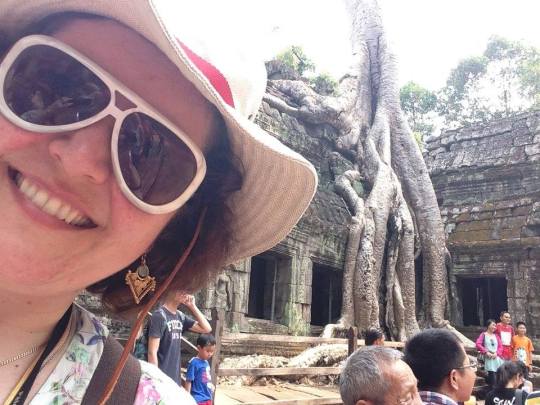
The encroaching nature and weathered look of Preah Khan, however, is solely a prologue to the real devouring power of the forest subsequently witnessed at Ta Prohm, the culminating phase of this open-air museum survey. As soon as Ta Prohm’s ruins are approached, the elusive footpaths give way to a stunning portrait of luxuriant foliage and creeping vines that lift as if they were deep-green shutters following each occasional waft of wind. Here, the Nagas and Apsaras have relinquished their leading roles to the true main protagonists, tetramelacea (tetrameles nudiflora), ficus strangulosa and ceiba pentandra (kapok), names that, given their peculiarity, would seem those of gods, but actually refer to gigantic trees. Their imposing barks have literally taken over the temple complex, coiling up the ruins like the Nagas themselves… or is it that the trees are living vicariously through the Nagas and viceversa? Alas, not even Lara Croft could have possibly deciphered this last enigma, bound to live on for the centuries to come! But, like Lara Croft’s alter-ego, we shall return…
Rome, 5 March 2019
#cambodia#viaggidellelefante#khmerempire#khmertemple#siemreap#angkor#angkorwat#angkorthom#baksei chamkrong#neak pean#prasat bayon#preah khan#ta prohm#apsara#naga#vasuki#samudra manthan#lara croft#tombraider#tomb raider#kapok#tetramelacea#suryavarman#jayavarman#jayadevi#anavatapta#terrace of the elephants#terrace of the leper king#garuda#hindu
12 notes
·
View notes
Text
Nagas in India and Asia part 4
When considering the other Asian Countries we can find many Naga related cultures and folk lore in Thailand and cambodia
In thailand we find the Phaya nagas to be semi-divine, demi-creatures, which possess supernatural powers as has been described in Buddhist and Hindu cosmology.[54] The "Kamchanod Forest" (ป่าคําชะโนด; RTGS: Pa Khamchanot) Ban Dung district, Udon Thani province, which is held in high reverence and fear across Thailand, is believed to be the border between the human world and the netherworld, and is frequently depicted in Thai folklore as the site of many hauntings, but more frequently is considered to be the home of the Nāga.[55]
According to Shan folklore of Nánzhào Kingdom (now southern China and Southeast Asia during the 8th and 9th centuries, which was centered on present-day Yúnnán in China), the Nāga inhabited the Ěrhǎi lake and is the creator of the Mekong.[54] In China, the Nāga (Chinese: 那伽) is generally more considered to be a dragon.
and this Naga apearance is some what different from the Indain Naga we see
further there is a story sarounding the Meekong River
Phaya Nak or Phaya Nāga (Thai: พญานาค; RTGS: phaya nak; lit. 'lord of Nāga', phaya derived from Mon which mean high nobility) or Nakkharat (Thai: นาคราช; lit. 'king of Nāga') in Thai beliefs, nagas are considered the patronage of water. nagas are believed to live in either water bodies or in caves. According to a popular legend, the Mekong River in north-eastern Thailand and Laos was said to be created by two Nāga kings slithering through the area, thus creating the Mekong and the nearby Nan River. The Mekong is synonymous with the unexplained fireballs phenomenon which has long been believed to be created by the nagas that dwell in the river.[48][49] Common explanations of their sightings have been attributed to oarfish, elongated fish with red crests; however, these are exclusively marine and usually live at great depths.[original research?]
Due to the strong relation with everything water, the Nāga in Thai belief does also play a role in rain control. The concept of Nak hai nam (Thai: นาคให้น้ํา; lit. Nāga granting water) is used for annual rainfall prediction. It is still practiced nowadays, most notably during the Royal Ploughing Ceremony. The oracle ranges from 1 nak hai nam (1 Nāga granted water); meaning the abundant rainfall should be observed that year, to maximum 7 nak hai nam (7 nagas granted water); meaning there might not be adequate rainfall that year.[50]
In northern Thailand, the Singhanavati Kingdom had a strong connection with nagas. The kingdom was believed to be built with aids of nagas, and thus, nagas were highly revered by the royal family. The kingdom, for a period of time, was renamed Yonok Nāga Rāj (lit. Yonok the nagaraja)[51]
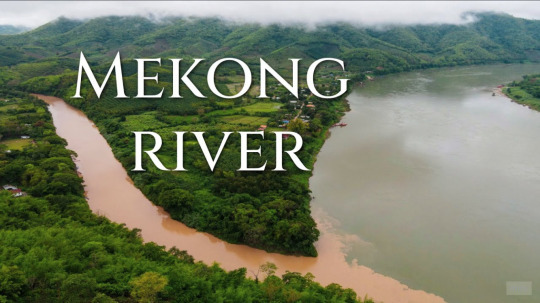

Cambodia also contains a story hoe their culture was made it is said that Preah Thong (Kaundinya I / Y Da) and Neang Neak (Queen Soma / Y Ga) are symbolic personas in Khmer culture. They are thought to have founded the pre-Angkorian state of Funan. Much of Khmer wedding customs can be traced back to the marriage of Preah Thong and Neang Neak.
According to reports by two Chinese envoys, Kang Tai and Zhu Ying, the state of Funan was established by an Indian named Kaundinya. In the first century CE, Kaundinya was given instruction in a dream to take a magic bow from a temple and defeat a Naga princess named Soma (Chinese: Liuye, “Willow Leaf”), the daughter of the king of the Naga. She later married Kaundinya and their lineage became the royal dynasty of Funan. Kaundinya later built a capital, Vyadhapura and the kingdom also came to be known as Kambojadeśa.



youtube
youtube
0 notes